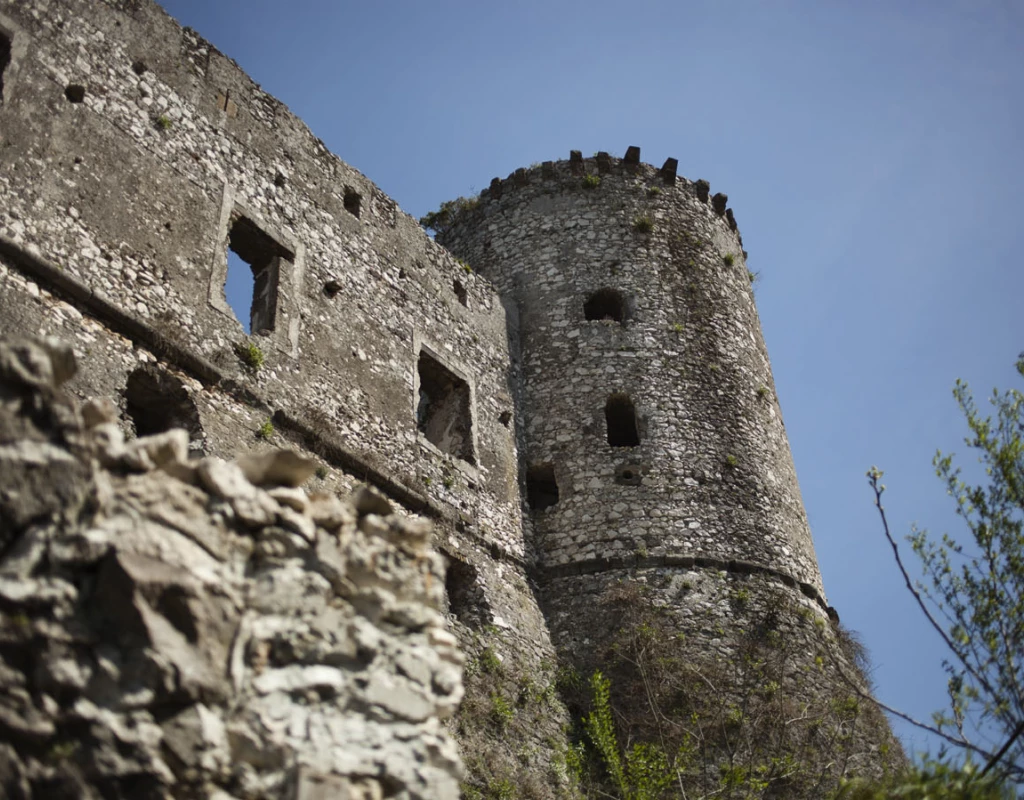A hill overlooking a small group of pitched roof houses. On the side, towards the center of the village, you can see the profile of a village that plunges its roots in the Lombard and Norman era, far from the year 1000. We are in Vairano Patenora, in the upper province of Caserta, in the valleys that support the path of the Volturno river towards the sea.
The castle of Vairano from the Volturno valley | Ph. Machi di Pace - Trentaremi

A castle, today little more than a ruin, surmounts the historic village. A postcard that contains the charm of these lands that live within the slow rhythm of the farmers. As if Nature recalled man's work, the castle is surrounded today by spontaneous vegetation and large wooded expanses.
At the entrance of the village, the medieval structure, with its narrow streets set between steep stairs, is immediately evident. Among collapsed attics and weeds grown at human height, abandoned houses alternate with others renovated according to the ancient forms of the town. Very few people live up here today, because the population has chosen the most comfortable hamlet of Vairano Scalo, a few kilometers lower.
The alleys become knotted along the path of the ancient village | Ph. Machi di Pace - Trentaremi

On our trip we meet a young couple with a child. We expected to find an elderly couple determined not to abandon their roots and places. Instead we bump into a blond-haired woman, who says smiling: «We chose to live here. It’s not hard, on the contrary: we are relaxed. The “new” center is only three kilometers away, we can easily reach it».
The family lives in a newly renovated house right on the top of the village, a stone's throw from the Norman Castle. According to historians, it was a simple watchtower and was transformed - during 1200, in the Angevin era - into a real residence, with surrounding walls and four corner towers for the defense and sighting of enemy armies. In the same period, the village was equipped with a city wall about a kilometer and a half long, with 14 watchtowers.
One of the imposing surviving towers of the castle | Ph. Machi di Pace - Trentaremi

In Aragonese times the castle was inhabited by the noble D’Avalos family, from which it still takes its name. Today it is fascinating to note how the fortress fits perfectly into the urban structure of the village. The uphill streets, the profile of the ancient noble palaces, the presence of medieval churches: everything seems to go towards this imposing building that overlooks the valley. The verses of an Italian band, Banco del Mutuo Soccorso, come to mind: “From here, sir, you dominate the valley. It is what you see”.
Ph. Machi di Pace - Trentaremi

The visit to the Castle is as spontaneous as the grass that grows visibly under your feet. No cordoned entry, no obligatory path, everything is left to the will of the traveler. With a little imagination he can bring the fortress back to what it was before the country lost its political and strategic interest.
For at least two hundred years Vairano has been a center of primary importance, both political and military. Not surprisingly, going back to the Angevin era, it is here that King Charles of Anjou and Pope Gregory X met “on January 24, 1272, and established centuries-old directives for the government of the Kingdom of Naples”, as it can be read on a plaque still affixed to the entrance of Porta Castello.
Ph. Machi di Pace - Trentaremi

On the other hand, we are on a communication route which in the early 1000s - and at least until the beginning of the 20th century - was fundamental for those traveling from Naples to the rest of Italy, both in the north and on the south side. The meeting between Giuseppe Garibaldi and Vittorio Emanuele II took place right on today's territory of Vairano Patenora (although it is better known as the "meeting of Teano") on October 26, 1860.
A millennium of history, from the Norman foundation to the unification of Italy, of which Vairano can regain possession, we hope. Moving from a ghost village to an indispensable destination for those who want to discover unknown pearls.

